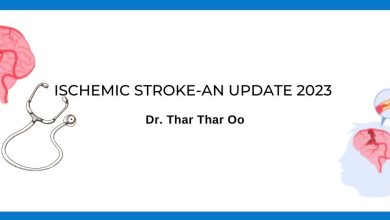Perioperative Management Of Diabetic Patients

Pre-operative medical assessment is crucial for the patient with diabetes mellitus to achieve good surgical outcome. Uncontrolled diabetes is associated with a higher morbidity and mortality and a prolonged length of stay on surgical wards.
Assessment can be undertaken by the specialist physician team in tertiary hospitals or on call medical team in district hospitals.
1. General assessment
Check the performance status and basic vital signs and look for complications of diabetes and comorbidities (hypertension, cardiovascular and renal impairment). The presence of any may complicate the perioperative management and increase risk.
2. Assessment of Glycemic control
Raised HbA1c can be related to adverse outcomes following surgical procedures. Desired pre-operative HbA1c value is <8.5% and should prepare few weeks ahead by optimizing medical therapy. However, between 8-9% can be accepted in circumstances like elderly and having comorbidities, those who need emergency surgery for life threatening conditions, those with higher risk of hypoglycemia.
3. Types of surgery
Minor surgery means day case or overnight stay but likely to resume normal oral intake within 12 hours (missing only one meal) and major surgery means unlikely to resume normal intake more than 12 hours (missing 2 meals or more).
General guidance
- The diabetic patients should ideally be placed as first case on the morning list to shorten the fasting period prior to surgery.
- Target blood glucose should be 6-10 mmol/L (110-180mg/dl) for all patients but a range from 4 to 12 mmol/L (70-215 mg/dl) is acceptable in some conditions.
- Capillary blood glucose levels should be monitored at least hourly during the procedure and in the immediate post-operative period.
Aims of peri-operative glycemic management
- Maintain good glycemic control throughout.
- Maintain normal electrolytes concentration.
- Optimize intra-operative cardiovascular and renal function.
(1) Elective minor surgery
Patients on diet alone or oral hypoglycemic agents (OHA)
- Maintain usual meal plan and oral drugs on the day prior to surgery.
- Omit OHA on the morning of the operation.
- Check capillary blood glucose before and after the operation.
- If blood glucose is >10 mmol/L (180mg/dl), consider the need for glucose-potassium-insulin (GKI) or variable rate intravenous insulin infusion. (VRIII)
- Restart OHA after the operation once the patient has had their first meal. The dose of these may need reducing, depending on dietary intake.
Patients on insulin
- Reduce bed time insulin dose (20% of basal –Glargine/ levemir or 50% of NPH – insulatard) on the day prior to surgery.
- Omit morning insulin on the day of the operation.
- Check capillary blood glucose before and after the operation.
- If blood glucose is >10mmol/L (180mg/dl), consider the need for GKI or VRIII.
- If blood glucose is <4 mmol/L (70mg/dl), treat as hypoglycemia.
- Restart usual insulin and diet after the operation. If a twice daily insulin regimen (Mixtard) is taken, it is recommended that half of the normal “breakfast” insulin dose should be prescribed with lunch after procedure. Or if post-operative RBS is < 180, skip insulin at lunch and usual dose is restarted at evening dinner time. If the long-acting (basal or NPH insulin) is usually taken at night, restart the normal dose at the normal time following surgery when eating and drinking normally.
(b) Elective Major surgery
Patients on diet alone or oral hypoglycemic agents – Omit OHA on the day of the operation
Patients are on insulin –
- Omit subcutaneous soluble or rapid-acting insulin and pre-mixed insulin on the day of the operation.
- If the surgery is planned in the evening and the patient is having breakfast, can administer half the breakfast soluble insulin.
- Commence GKI or VRIII two hours before the operation.
- Monitor blood glucose hourly pre-, intra and post-operatively (target 100-180 mg/dl).
- If blood glucose <4 mmol/L (70mg/dl), treat as hypoglycemia.
- After operation if the patient is allowed eating and drinking normally, start normal dose of insulin with the 1st meal and stop the GKI or VRIII 60 minutes later.
2. Emergency surgery
- There will be no opportunity for pre-admission planning. The blood glucose concentration should be closely monitored and, if it rises above 10 mmol/L (180mg/dl), a GKI or VRIII should be commenced and continued until the patient is eating and drinking.
- If the blood sugars are > 250 mg/dl and signs of decompensation (acidosis, hypotension), check urine/blood ketones /electrolytes. If ketones are positive, postpone operation, refer to physicians and treat as DKA.
Appendix 1: Glucose- Potassium-Insulin infusion
GKI infusions are usually not recommended as perioperative management in updated guidelines as not suitable in poorly controlled diabetes or patients who are very unwell (where close serum glucose monitoring is required). However, it can still be an option in areas where is limited access of infusion pumps and close monitoring. The drawback is need to discard the whole bag if the sugars are not meeting the target.
- Take a 500-ml of 10% glucose and add soluble insulin according to the table below. The insulin should be injected into the bag and mixed thoroughly.
- Add 10 – 20mmol of potassium chloride (Note: omit potassium if patient has renal failure or pre-op potassium >5mmol/L)

- Run infusion at 100ml/hour
- Target glucose 6-10mmo/L (110-180mg/dl), check RBS hourly during operation
- Each change in units of insulin per bag requires a new bag
- If the patient is fluid restricted, use 250 ml of 20% glucose with the same insulin dose as above. If the patient is hyponatraemic then a concomitant infusion of 0.9% saline should be considered.
- The pre-, intra and post-op blood glucose is stable; the post-op blood glucose may be checked 2hourly.
Appendix 2: Variable rate intravenous insulin infusion (VRIII)
- This is alternative to the GKI infusion, which is more suitable for very ill patients peri- or post-operatively.
- It involves separate infusion of glucose and insulin.
- Fluid therapy (substrate) – 5 to 10% dextrose water and 10 mmol of potassium chloride should always be run alongside the VRIII at a rate of 40 ml/hour or adjust the rate to meet the patient’s fluid maintenance requirements.
- Insulin therapy ( VRIII ) – A separate infusion pump with 50 units of Regular insulin (Actrapid) in 49.5mls 0.9% saline is infused at the following rate:
- Appropriate precautions should be taken to ensure both infusion lines are given with 3 way connector.
Variable rate insulin regime (VRIII) rate

- If the patient has significantly impaired renal function (eGFR<30), the patient may need a reduced infusion rate.
- The patient who is insulin resistant (obese, infection, steroid therapy) needs more insulin (use increase rate).
- Target glucose 6-10mmo/L (110-180mg/dl)
- It is not acceptable to allow blood glucose levels to be consistently greater than 10mmol/L (180mg/dl) and hypoglycemia <4mmol/L (70mg/dl) should be avoided. Therefore, 2 hourly monitoring is optimal.
- Change to subcutaneous insulin when eating normally. It is important to continue the IV insulin infusion for 60 minutes after the first subcutaneous insulin injection has been given.
Post-operative care
Aims
- Ensure glycemic control, fluid and electrolyte balances are maintained.
Aim for a capillary blood glucose level in the 6-10 mmol/L (110-180mg/dl) range where this can be achieved safely. - Monitor fluid and electrolytes daily and prescribe appropriate fluid.
- Encourage an early return to normal eating and drinking, facilitating return to usual diabetes regimen.
References
- ADA, American Diabetes Association (2020) the Standards of Medical Care in Diabetes-2020. Diabetes Care, 43, Supplement 1, pp. S1-212.
- Diabetes UK. Position statements and care recommendations – NHS diabetes guideline for the perioperative management of the adult patient with diabetes, 2012
- Dhatariya K, Levy N, Kilvert A, Watson B, Cousins D, Flanagan D, Hilton L, Sinclair-Hammersley M and Rayman G for the Joint British Diabetes Societies Diabet. Med 2012; 29: 420-433 :
- Clinical guideline for the management of adult patients with diabetes mellitus during surgery/ elective procedure, Royal Cornwall Hospitals, 2012
- Association of Anaesthetists of Great Britain and Ireland. Peri-operative management of the surgical patient with diabetes 2015. Anaesthesia2015; 70: 1427-1440
- Myanmar guideline for insulin therapy. 1st edition, 2014
- Insulin therapy in clinical practice. Myanmar Diabetes Care Program.2019






